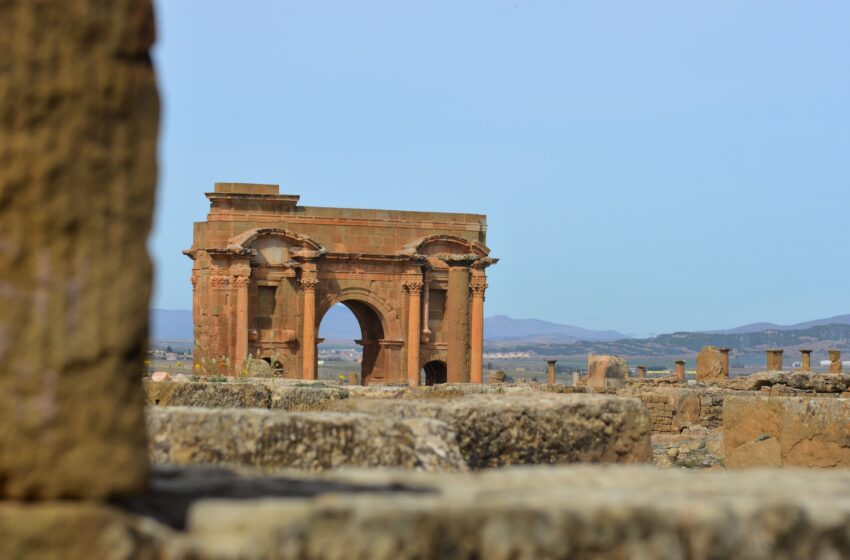
Algeria’s Only Travel Guide You Need For A Great Trip in 11 Easy Steps
- Destinations Africa
Cruisit Team
- April 22, 2022
- 0
- 4590
- 70 minutes read
Algeria’s Background
The National Liberation Front (FLN), Algeria’s main political party, has dominated politics since the country’s independence from France in 1962. Many Algerians were dissatisfied with the FLN’s prominence and took steps to counteract its influence. Fighting erupted into an uprising that resulted in over 100,000 deaths between 1992 and 1998. The army installed Abdelaziz Bouteflika as president in a rigged election in 1999, but claimed neutrality in his landslide reelection win in 2004.
When someone tells their friends and family that they are heading to Algeria, they receive “the look.” Why do you go there if you don’t like the way you look? Because Algeria is a genuine location, you are obliged to spend your vacation in the Caribbean. “Are you being duped?” Another aspect of the expression is “it can’t be safe.” We hope you don’t end up in the news.
Camels, sand dunes, unique cuisines, the Mediterranean Sea, and adventure are more than enough to entice visitors to these Northern African nations, but if we have time and energy (We certainly do have both), we’ll tell you the rest of the narrative…
It’s believed that merely listening to a song may take you to another time and place. The lyrics have the potential to elicit emotions or recollections… A song has the power to move you… Leave it to some hard-nosed, no-nonsense Midwesterners to take this sentiment literally!
“Algeria is not breaking up,
it still has proud and resilient residents “
Africa’s second largest country is only a short flight away from Europe. The north, with its snow-flecked mountains and breathtaking coastline, is home to urbane and charismatic cities such as Algiers and Constantine, as well as some of the most magnificent Roman sites in existence, such as Timgad and Djemila, both vast, perfectly preserved Roman towns with hardly another tourist in sight.
Algeria’s other major lure is its spectacular Saharan area. These are the desert vistas of mythology, whether it’s a sight of the sand seas that encircle Timimoun or the burnt-red mountains of the extreme south.
But, for all of its plum dunes and majestic monuments, it’s the Algerians themselves, who greet tourists with friendliness and curiosity, who are the true highlight of this country. Algeria is the place to go for accessible adventure and a complicated, intriguing cultural experience.
Algeria, oh Algeria. That enigmatic country has the potential to be a top-tier destination for explorers and travelers! Algeria may not be the simplest nation to obtain a visa for, nor the easiest location to visit, but this hidden jewel of North Africa offers remarkable adventures. Plan a trip to Algeria using one of my two 10-day itineraries.
The Algerian capital, weather-warmed city, is home to some of the world’s most colorful, fun art deco buildings. However, the boulevards of this Mediterranean Paris are also studded with mosques and minarets, including the 17th-century Fishermen’s Mosque and neo-Moorish pleasures like the Grande Poste.
Algeria, which has been conquered by the French, Romans, and Phoenicians, has an eclectic blend of civilizations, and historic remains from diverse ages can be found across the nation. Despite its economic importance, Algiers is far less touristic than surrounding African cities, and a visit to the old Casbah is not to be missed.
UNESCO sites all across Mediterranean Algiers, host to one of the world’s oldest casbahs; the Roman relics of Timgad, Djemila, and Tipasa; the M’Zab Valley, where the fortified town of Beni Isguen, deep in the Sahara, is typically shut to foreign nationals; and El Oued, the Saharan “town of a thousand domes,” are all must-sees.
- Discover Byzantine, Roman, and Phoenician sites such as The Timgad near Batna, Djemila in Sétif, and Hippo Regius in Annaba.
- Go on an unusual journey through the Sahara by sand skiing or camel trekking.
- M’zah Valley, the heart of Mozabite culture, is a great place to study art therapy.
- Take breathtaking tours of the Saharan Atlas Mountains.
- Djelfa’s old rock engravings are worth seeing.
- Explore the well-known Saharan National Park (Tassili National Park)
- Relax at the world-famous Turquoise Coast Beach or along the picturesque coastlines of Skikda, Oran, and Ghazaouet.
- Visit Algiers’ ancient 17th-century Casbah Camp and a mountain hideaway in Assekrem.
In Ghardaia, you may buy carpets and souvenirs.
- Visas will be denied to Israeli nationals and anybody having stamps and proof of visiting Israel, including stamps from Egypt’s and Jordan’s land borders with Israel. Not to mention that almost everyone needs to have a visa in advance. So it’s often better to get in touch with a local tour operator to get the visa done for you.
- The country’s official languages are Arabic and Berber. However, almost everyone speaks French. You may want to learn some Arabic or French. But if you don’t English is still not so uncommon.
- Algeria is a Muslim country, but a liberal one in some parts of the country and conservative in many others, so bear that in mind when dressing.
- The weather and temperatures may be blistering, reaching over 48 degrees Celsius. The only thing you’ll need to bring is sunblock. Take it with you and it might not be available in local shops.
- Algeria has is a cash based society. We recommend taking enough Euros or USD in cash to change on the unofficial markets if you want to save at least 30% on everything you buy within the nation. Forget your bank cards because many stores will not take them. You won’t likely be able to withdraw money from an ATM with them.
- Tap water is not recommended, so buy water bottles, or get a LifeStraw filtered Bottle.
- Maps.Me is a great way to get around Algeria. You can download offline maps of the country. The map also shows hiking trails and walking paths, something that Google Maps doesn’t have.
- When you arrive in the country, purchase your domestic tickets in cash from the airline’s office. You may save money by exchanging your money locally, as previously suggested.
- Yassir Ride-sharing app is the alternative to Uber, Lift, Grab, Gojek, or Careem. To use YASSIR, you must have an Algerian phone number.
- Make sure your bank does not charge you every time you withdraw money from an ATM or pay using POS systems. This will save you a lot of money.
- Algerian Dinars are nearly impossible to exchange once you’ve left the country for any other hard currency. So make sure you exchange them all before leaving.
- Every Friday, Algeria will be closed; no one will work or operate their businesses. It is meant to be a day of relaxation, prayer, and spending time with family. It’s a good idea to plan ahead of time whether you intend to dine out, see sights, or go shopping. Saturday is still the weekend in Algeria, but the markets are more livelier and more people are out and about.
- Don’t forget your travel insurance. We recommend getting a good travel insurance policy to cover your trip to Algeria.
Algeria’s safety is one of the most pressing worries for visitors. And the major reason why many visitors do not visit Algeria, at least according to information obtained from numerous travel forums and Facebook travel groups online.
Is Algeria, then, a safe country? Algeria is now regarded as very safe, especially near its borders with neighboring countries.
The following is the official travel advise from the United States and the United Kingdom governments:
- 30 kilometers from the borders with Libya, Mauritania, Mali, and Niger, and 30 kilometers from the border with Tunisia in the provinces of Illizi and Ouargla, as well as in the Chaambi highlands.
Aside from such locations, Algeria is regarded as a safe country. When going across the nation, you will encounter a lot of cops, but none will disturb you at all.
Furthermore, every local you encounter will be extremely nice and inviting. Of course, there are always a few bad apples in every country on the planet.
Algeria has a lengthy coastline with a warm Mediterranean climate with scorching summers and chilly, wet winters. Summers in the Highlands are hot and dry. Winter rains (less heavy than on the coast) begin in the highlands in October. Sandstorms are common in the months of January, February, and March.
The months of March and October through November are ideal for visiting Algeria since the days are cool and bright. Even though the desert night temperatures are exceedingly low, mid-winter might be a wonderful time to visit.
The average high temperature in winter (December through February) is between 71°F (21.7°C) and 63.6°F (17.6°C). It rains or snows just a few times every month on average: 2 to 4 times per month. These are the slowest periods of year for travelers and may reflect on prices of flights, tours and accommodation
By Land
The land borders with Morocco, Libya, Mali, and Mauritania are all entirely blocked from Tunisia. While the physical border with Morocco remains blocked, direct flights between Algiers and Marrakesh are also suspended.
By Ferry
Ferries from Spain, France, and Italy are also available. However, boats are more costly than planes.
By Plane
Flying is the most popular and convenient way to get to Algeria. It should be mentioned that Algeria is home to 18 international airports!
In April 2019, a fresh new airport terminal opened in Algiers, making arrivals much easier and faster. The former international terminal has been converted into a domestic terminal.
Prepare for a long wait when you arrive in Algeria; every baggage, including your checked-in luggage, will be searched upon arrival.
When leaving the nation, you must disclose ALL of the money you take out of the country, as well as the USD/EURO, etc., that you brought with you. This procedure was really painful.
By Plane
Because Algeria is a large country in Africa, flying is the obvious choice for getting from one end of the country to the other. Flying domestically is fairly inexpensive. A domestic aircraft is the greatest method to navigate throughout the vast nation; it will spare you days of unpleasant and scorching bus or train travel to reach remote areas.
By Train
You may also travel across the nation by train. Algeria has three major railway routes, all of which go from Algiers to Oran in the country’s north. Algiers to Constantine, then Algiers to Annaba.
There is also a railroad that connects Oran to Bechar in the south. It departs at 11 p.m. and arrives at 8 a.m. A bed costs roughly 1500 dinars per person (about 10 dollars). Train travel is thus not an option if you intend to visit anyplace other than the extreme north of the nation.
By Bus
The majority of Algeria’s roads are of high condition. The motorways are as excellent as those in central Europe, and there are frequent buses to every place across the vast country.
By Car
Sim cards with 4G connections are widely accessible at the airport. The Kiosk is open 24 hours a day, but expect a line of people coming home to purchase a sim card.
A local Ooredoo Sim Card with 7 GB internet use costs 3000 DZD. You’ll have at least a 3G connection everywhere I go. Ooredoo Sim Card deals may exceed 1200 DZD, which includes 10 GB of internet use and call time. It’s only about 300 DZD more to acquire up to 40GB.
All hotels and restaurants had free internet, however it was usually rather slow, so you might want to use my Sim Card the most of the time.
Top Places in Algeria

The Old Casbah
The Casbah, located in the historic area of Algiers, is full of intriguing passageways and shadowy dead ends. In Algeria, the term “Casbah” refers to a variety of citadels situated throughout North Africa.
However, it was the Old Casbah that was included on the UNESCO list in 1992. It is a one-of-a-kind Islamic stronghold with historic mosques, palaces, and residences hidden within its walls.
Tipaza
Tipaza itself is a popular tourist destination in Algeria. The remains of ancient villages, which are recognized as a UNESCO World Heritage Site as evidence of a bygone civilisation, may be found here.
The city operated as the most significant commercial center in the Mediterranean, and subsequently as a military camp, therefore there are many structures that witness to numerous times and historical events.

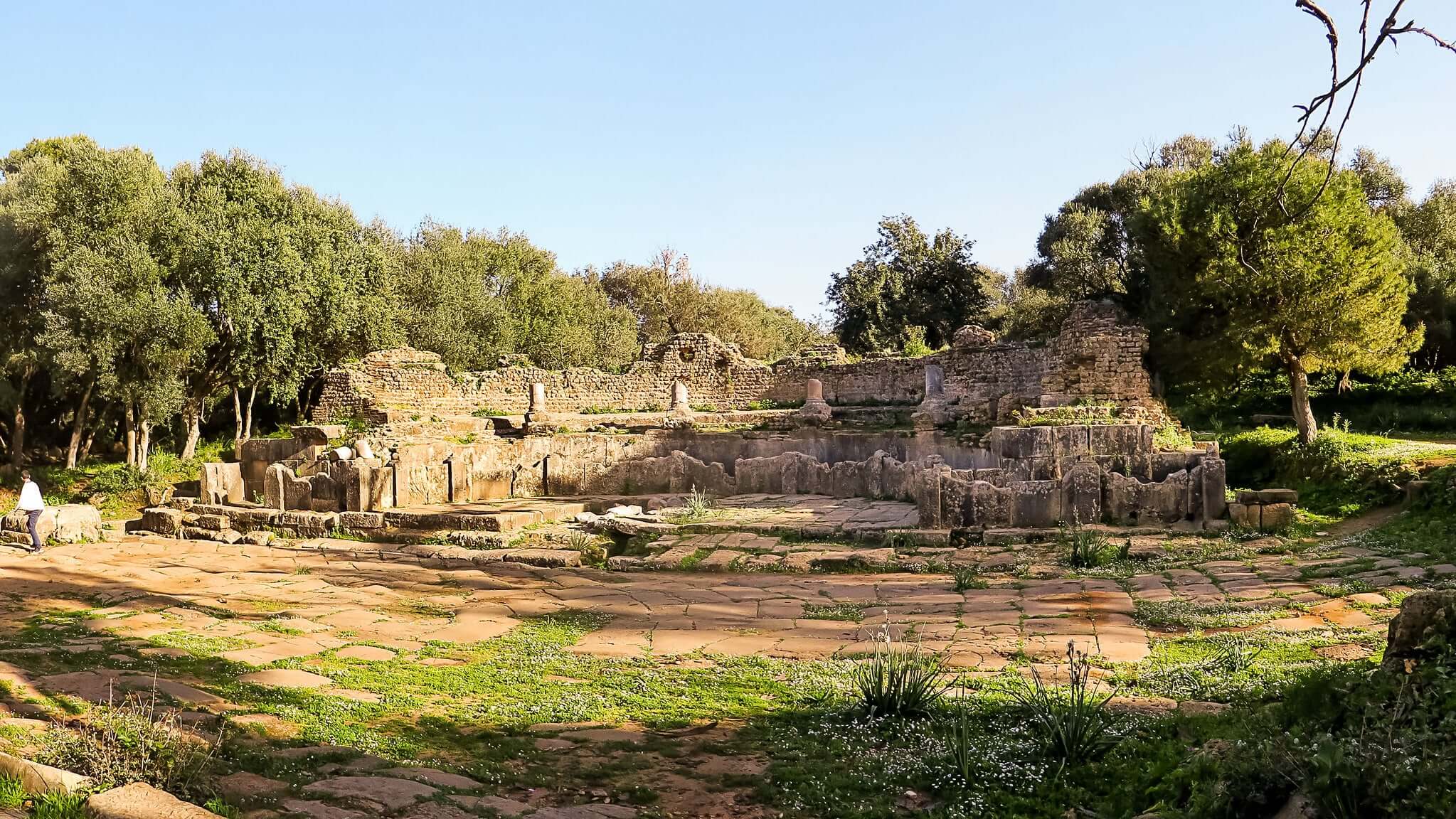

Constantine
Anyone who has visited the city of Constantine would agree that it is one of the top locations to visit in Algiers. The city of bridges, located on the border with Tunisia, has a long history that dates back to antiquity. It has been renamed countless times and passed through the hands of several civilizations. The city’s location among beautiful gorges, cliffs, and precipices, over which several bridges are erected at altitudes of several hundred meters, is a distinguishing characteristic.
Roman City of Timgad
The ruins of Timgad, a forgotten ancient Roman city, stretch back over 2,000 years. The city, erected in the desert, existed as a military colony for hundreds of years and was one of the roots of Christianity. The sands of the Sahara desert, which have buried the abandoned city, have preserved some of the city’s buildings to the current day.


the Catholic Cathedral of Our Lady of Africa
The greatest religious monument of Algeria – the Catholic Cathedral of Our Lady of Africa – rises at a height of 124 meters on the rocky shore of the Mediterranean Sea. The concept for the shrine is said to have come from two Lyon residents who once erected a modest sculpture of the Virgin Mary in the hollow of an olive tree here. The cathedral itself, built in 1872, is constructed in a style that combines Roman and Byzantine characteristics.
Fort Santa Cruz
The old fort of Santa Cruz, built in 1610, has become the city of Oran’s primary attraction. It is a fortification that was formerly part of the outer defenses. The edifice, which had walls up to 2 meters thick, was composed of solid natural stone, and it took 2,000 workers to build.

7-day Itinerary in Algeria (with extension options)
Days 1 (with possible 1 day extension)
Arrive in Algiers
After a delicious breakfast, you’ll head to the spectacular 125-meter-tall Church of Notre Dame d’Afrique, which overlooks the long harbor above Bab El Oued and has a wonderful interior design and outstanding religious architecture.
Your next stop will be the historic 10th century city known as the Casbah “The Citadelle,” where you will wander along the cobblestone narrow alleyways and discover the complicated Ottoman buildings, palaces, and mosques.

The 17th century Ketchaoua Mosque is one of the best surviving Ottoman mosques in the lower Casbah and the first big edifice that tourists notice.
Make your way to the downtown area, just off the main road of Martyr’s Square, where you will see a magnificent contemporary mosque in a bright yellow hue and an ex-colonial church.
Return to one of Algiers’ most significant, prominent, and historical monuments, the Bastion 23 palace, which is positioned directly on the sea. It is a collection of three palaces (17, 18, and 23), and you will learn about their history and enjoy walking around their secret rooms.
You may want to take a lunch break in a nearby decent restaurant by now.
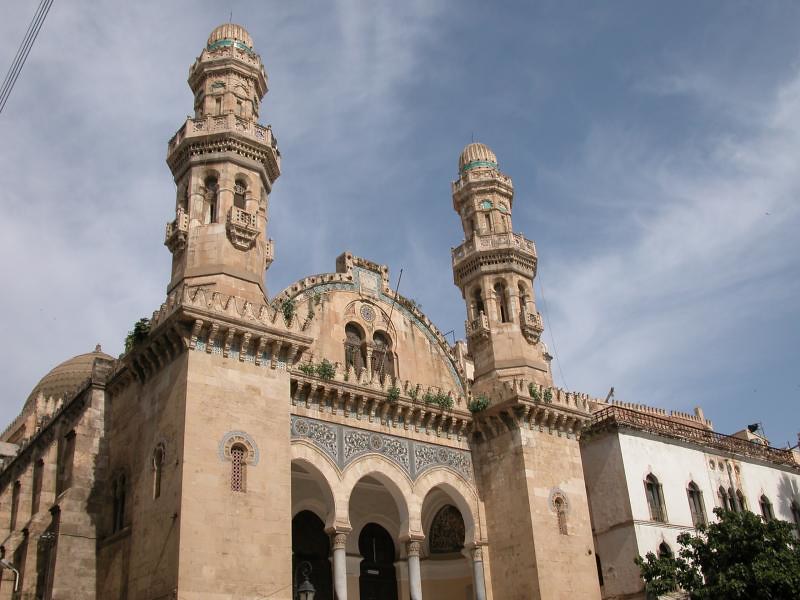

Pass the Fishermen’s Mosque and go down the Seafront, facing the sea. It immediately reminds you of the port of Marseille, with its colorful tiny vessels and a collection of classic European architecture.
Continue up to Algiers’ downtown, through the majestic French colonial whitewashed buildings, and explore the town’s many neighborhoods.
Walkthrough the Grand Poste office, the city’s most massive structure, which is a remarkable example of French-designed, early 20th-century Moorish architecture.
After you’ve finished seeing Algiers’ bustling city, visit the Botanical Landscape of El Hamma, a sprawling garden dedicated to the collecting and preservation of a diverse range of flora, massive trees, and a central area with fountains and lawns. It’s a nice place to get away from the heat and unwind.
Your next visit will be to the towering 92-meter-tall Monument to the Martyrs, which is located on a hill overlooking the whole city and visible from several angles throughout Algiers. From a specific viewing point, you will obtain a fairly good photo.
After such a busy day, you will likely be ending your evening. You can go grab some dinner out or head to your hotel and have dinner there.
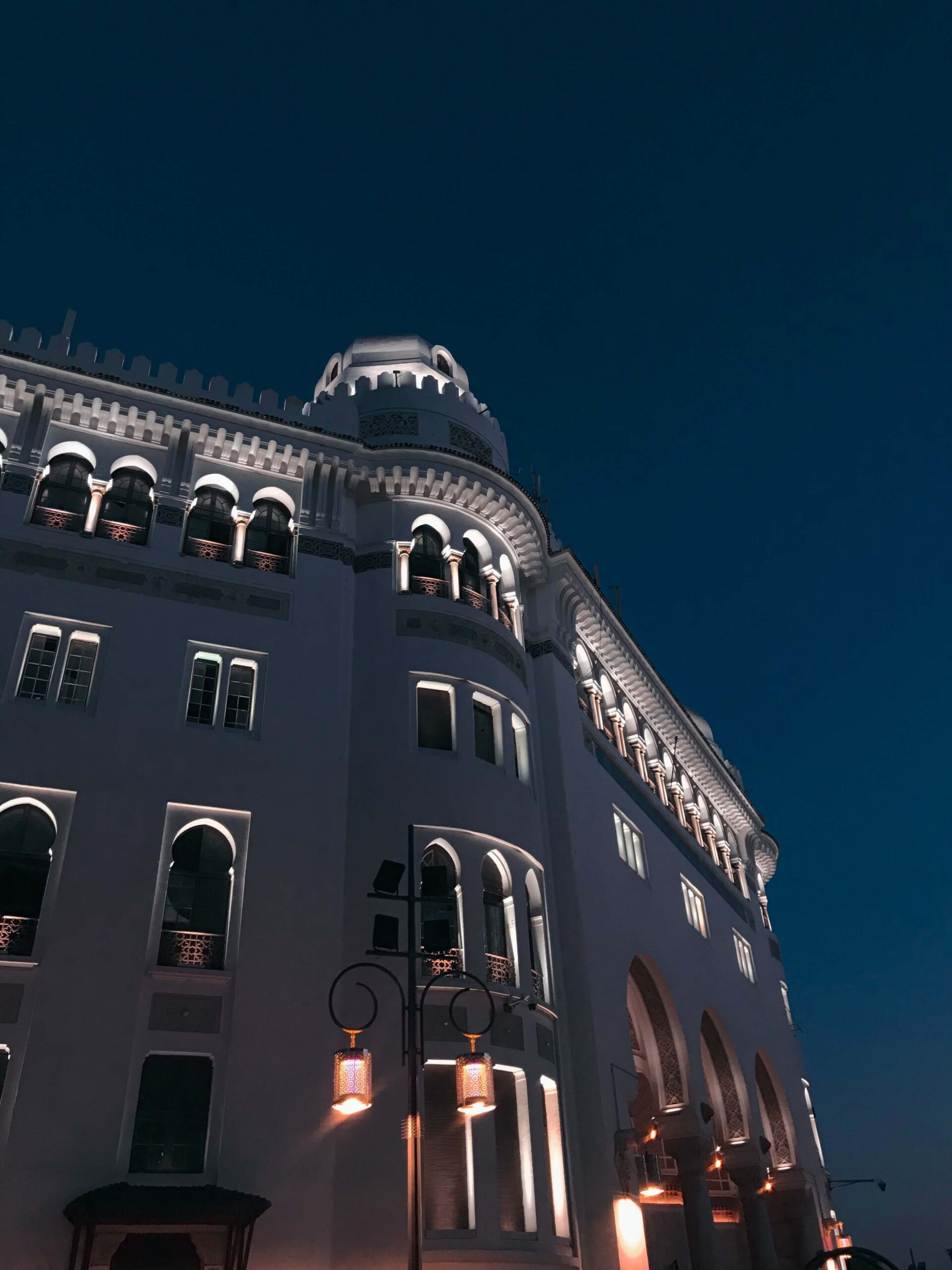
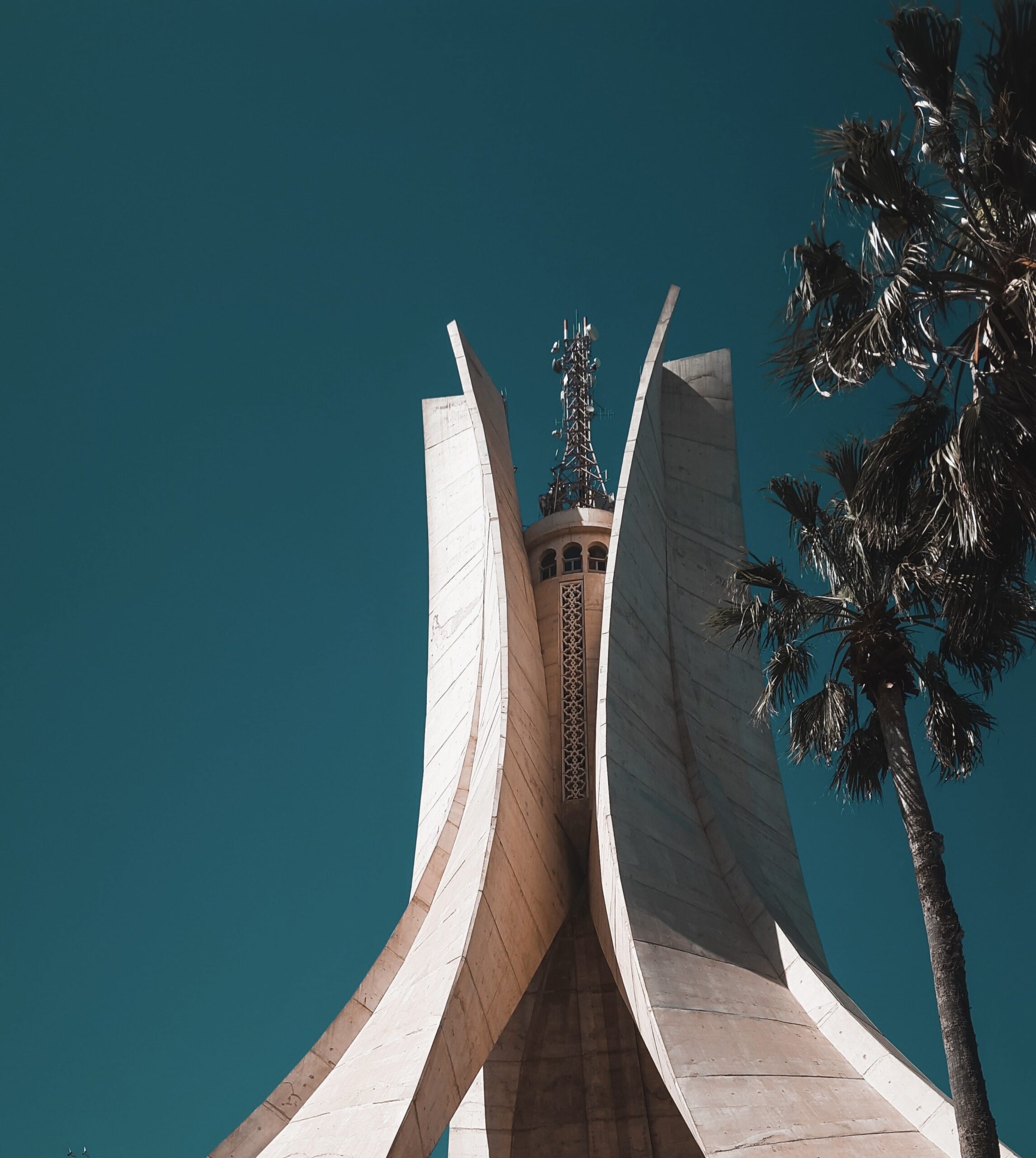
Days 2+
Free walk in Algiers
Now that you have gotten yourself acquainted with the city, you can have a freewalk around town and visiting different markets and possible other attractions.
When you are done with the day, take a shared cab or a flight (details about the cost are below) and head to Constantine where you will be staying for your next days adventure. The route by car takes around 4 hours.

- Backpacker:
- Budget: ABC Hotel
- Mid-range: Lamaraz Arts Hotel
- High end: El Aurassi Hotel
This section will be added shortly.
By Cab
Tipaza
You can take a taxi to and from Tipaza which is an hour away from Algiers for approximately 5000 Dinars. But, note that the fare could actually be much less.
A Cab ride to several parts of Algiers cost around 400 to 500 dinars.
A shared taxi (found in the Algiers Station) is a common interstate (city to city) transportation that cost around 900 dinars. For those familiar with the type of ride, it's a very common transportation in Egypt as well.
Constantine
Take a shared cab (which costs around $5). The route by car takes around 4 hours.
By Plane
A flight to Constantine costs around $20 to $40 and is 30 to 45 minutes away from Algeirs.
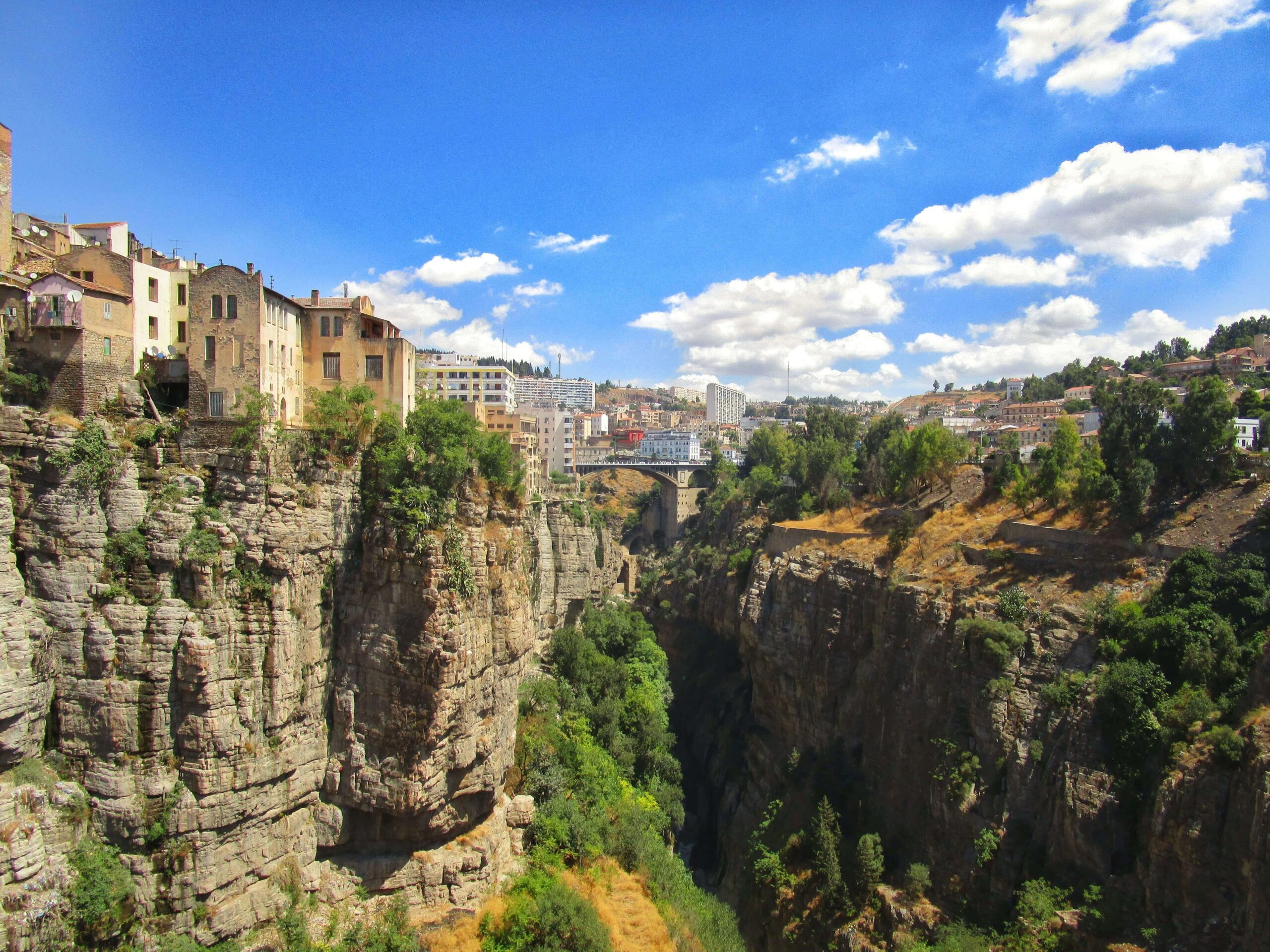

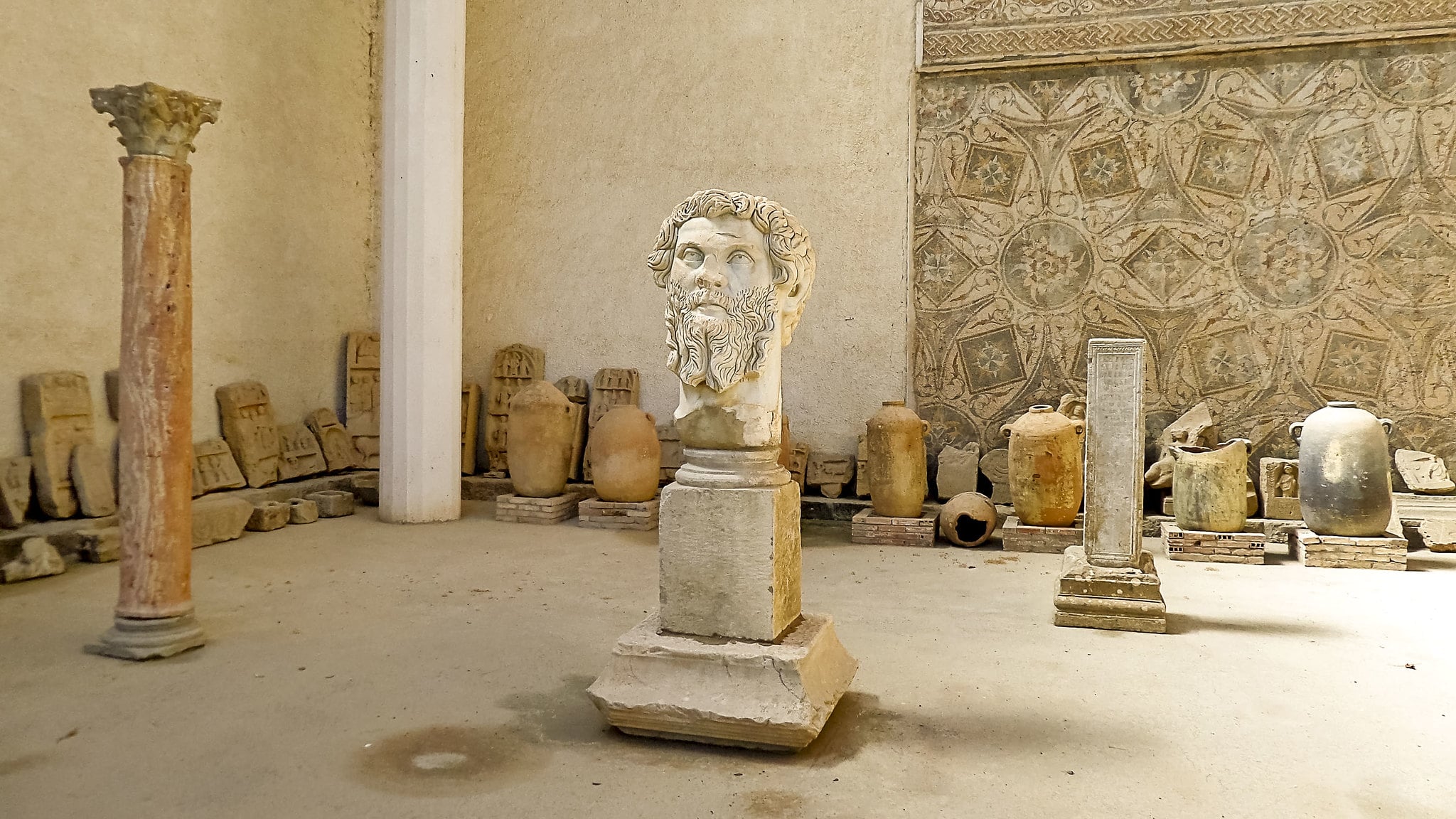
Days 3+
Arrive to Constantine, Explore Djemila
After breakfast, head to the old city of Djemila.
The ancient city of Djemila is around an hour and a half away from Constantine and is where this day’s adventure begins.
Djemila is set out on a fascinating voyage back in time to Djemila or Cuicul, as it was originally known, to view and explore one of the greatest most brilliantly preserved Roman Ruins in North Africa. Three hours from the capital, or 318 kilometers by automobile.
Djemila’s huge ruins are recognized for their vastness, captivating mosaics, and majestic buildings in a remarkable state of preservation. It is fantastically located, sunk between towering gorgeous mountains, with an outstanding vista of ruins with various contrasts and geographical heights.
Begin at the museum, where guests can see one of the most spectacular mosaics in Roman Africa, and continues through this ancient area of Rome, with a long walk through the Christian neighborhood, the Severian Square, the Theater, and the old town, all while hearing tales of its ancient history throughout the centuries. Learn what it was like to live in an ancient Roman town two millennia ago.
- Backpacker:
- Budget: Ibis Hotel
- Mid-range: Novotel Hotel, Protea Hotel
- High end: Marriott Hotel
Constantine is regarded as somewhat safe for foreigners. But take your precautions, especially as a solo woman traveler. You may want to have a guide or a taxi with you for the entirety of your stay there.
By Cab
Djemila is an hour and a half away and costs around 900 dinars and can be bit cheaper with enough haggling. However, we advise you to have a private cab with you for the day as you may not be able to get back from Djemila and back to Constantine on your own.
Days 4+
Timgad
From Constantine, Timgad is only 2 hours away. Set off on a fascinating tour to Timgad or Thamugadi, as it was originally known, created in 100 AD by Trajan to the veterans of Rome, back in time to view and explore one of the colossal Roman remains known as the Pompeii of Africa which were once buried under the sand. Timgad is notable for its massive size, over 50 hectares, symmetrical grid design, two major directed streets, big forum, baths, library, and majestic Capitol with an exceptional state of preservation, and is around 130 kilometers by automobile from Constantine.
It is strategically positioned, surrounded by the Aures mountains on a platform, allowing you to observe all structures from various vantage points. In your Timgad trip, you’ll travel through the hauntingly deserted alleyways of the old city and witness one of the most impressive structures in Roman Africa, and getting a guide can bring the ruins spectacularly to life, giving you a rare insight into home life in antiquity.
With a lengthy walk via the Main Gate, crossing the South-North oriented street, the Greatest baths of the North, Library, the massive Forum, the luxurious Latrines, Theater, The Greatest baths of the South, the huge Capitol, Marketplace of Sertius, and the famous Trajan Arch… with tales of its ancient history from throughout the centuries.

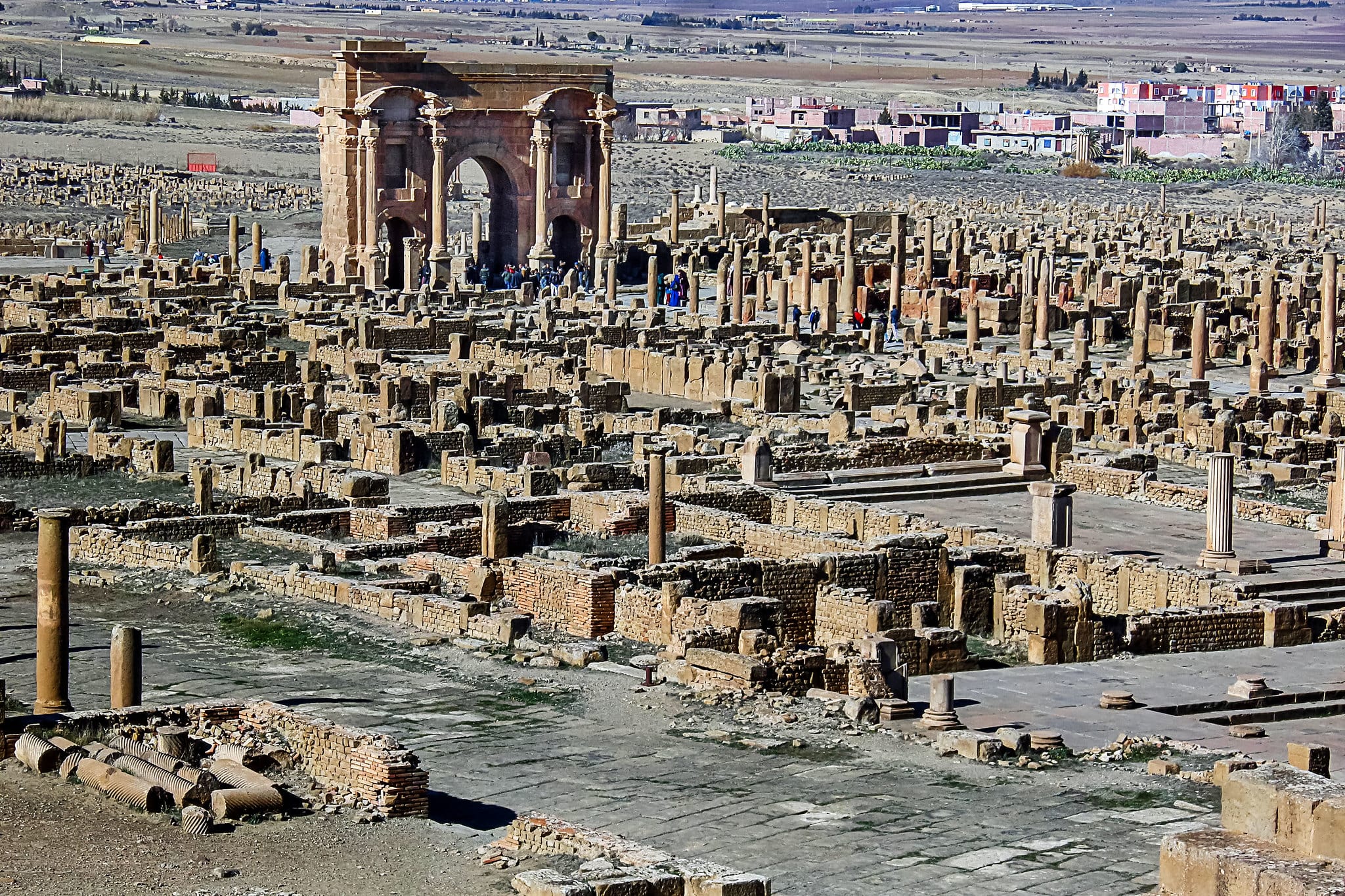


This section will be updated shortly.




Days 5+
Explore the City of Bridges, Constantine
It has been a couple of days in Constantine but now begins your exploration of the city. Start your tour with the museum and the best Ottoman edifice, the Palace of Ahmed Bey, which you will stroll around to discover the courtyards, gorgeous gardens, bright tiles with innovative awe-inspiring themes and mosaics.
Then, take a stroll through the Casbah’s narrow alleys and along the Boulevard of the Abyss, in which you can see the stunning scenery of the beautiful landscapes through the pierced gorges, until we arrive at the city’s most iconic symbol, a 175 m (575 ft) high suspension bridge of Sidi M’Cid with a span of 168 m that connects the city to the hill.
After crossing the suspension bridge, take the stairs to the left and climb them until you reach the open space of the Monument to the Dead, a memorial in the style of a triumphal arch crowned by a statue of the winged victory that honours World War I dead.
Take a break for lunch at a lovely restaurant where you may sample the local cuisine and refresh yourself with juice, tea, or coffee.

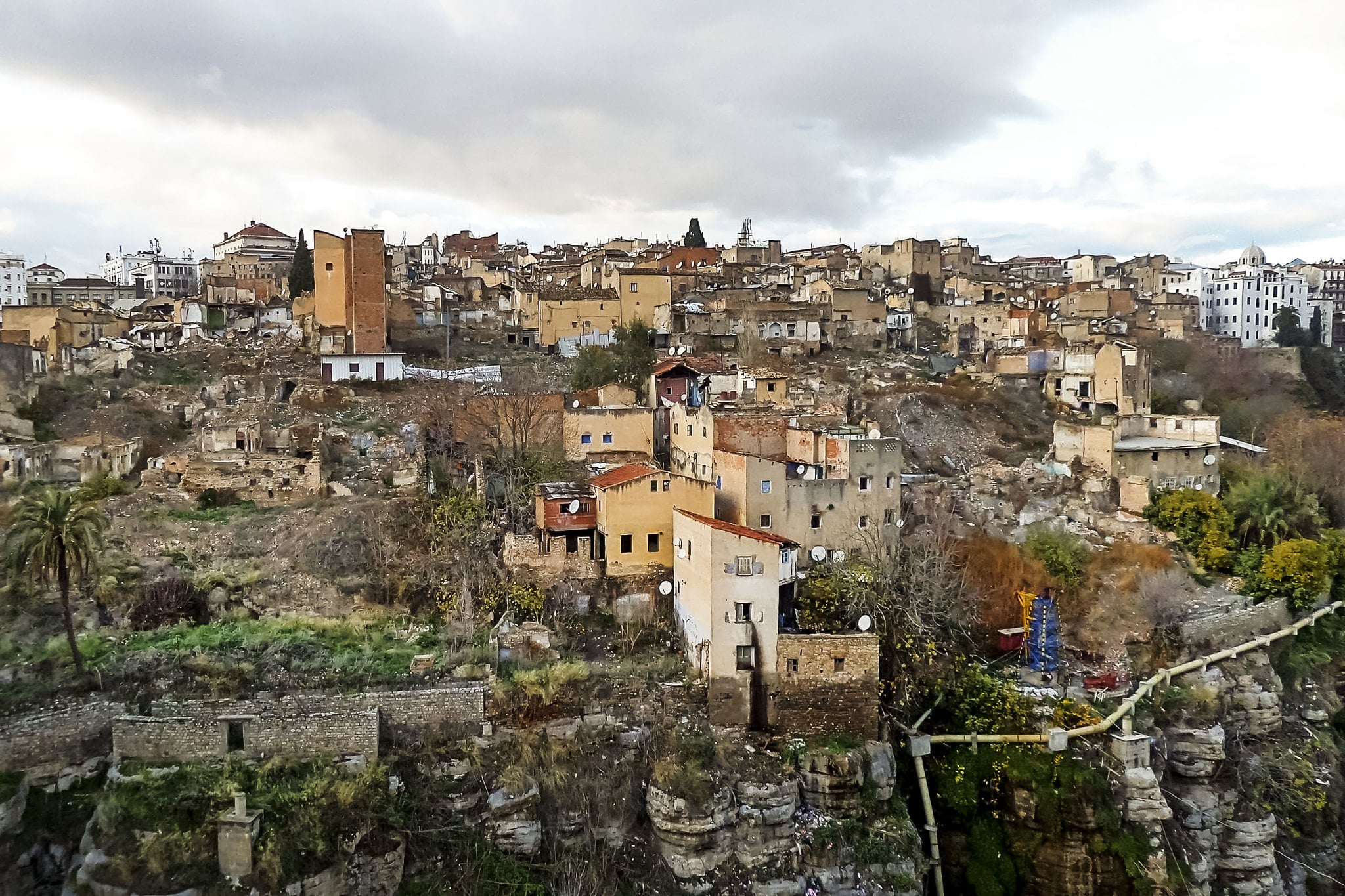

A few minutes’ walk across the vertigo-inducing and unstable Mellah Slimane bridges will take you to the spectacular alpine panorama of the hanging homes on the canyon and the deep ravine dwarfed by the vastness of the gorges. From the footbridge, you will be able to observe the historic Bab El Kantara Bridge as well as the spectacular Sidi Rached Viaduct.
Then climb the stairs or take the elevator to cross the footbridge, continue along the busy rue of Larbi Ben M’Hidi where you can see the 11th century Great Mosque externally, and then sidewind off into cobbled alleyway streets of Souika or the Medina where you will discover the small marketplaces that date back to the 16th century, the meat section, and the Fatimid period house.
Continue up to the main center after visiting Souika’s Labyrinth. Depending on your health, either climb the long or short staircases. You’ll arrive to the fascinating National Museum of Cirta, where you’ll be able to examine artifacts from prehistory, Roman times, Punic era, Islamic period, and French period. They are all situated on the ground floor, which includes an exhibition hall, and the top floor, which does not include the garden.
Take the tram from the main center terminus to the Emir Abdelkader Mosque, Constantine’s most majestic and spectacular monument. It is the greatest spot to discover the beauty of its Islamic architecture and the wealth of its opulent decorations until the end of your evening. You may want to have dinner and then head to your hotel afterwards to get ready for your next day.
Days 6+
Arrive to Algeirs, Explore Cherchell
After breakfast, head to the airport, or take a shared taxi to Cherchell. Cherchell is a tranquil city that hides its treasures and history between the mountains and the sea, far from the primary axis of contemporary Algeria’s urban activity. It has rich and varied landscapes on fertile soil, a warm temperature, and a sea wind that is healthful and invigorating in the summer. It is located on the coast and is the site of the renowned city “Caesarea.” For a long time, it was the major draw for Mediterranean seafarers. It boasts a magnificent public area overlooking the harbor with many gorgeous Phytolacca dioica trees.
The wreckage of massive aqueducts may easily be seen from a specific vantage point on the road. Your tour starts with the ancient museum in “Martyrs’ Square,” which displays a remarkable collection of statues, mosaics, funerary tombs, and artifacts and takes you on a trip through Cherchell’s past. Then, from the esplanade, cross the national road to see the mosque of “El Rahman,” which has an unusual architecture that resembles an ancient temple with Ionic capitals, and continue south through an alley of this small town to see the great theater and then the forum, before returning by the national road to the door of Tenes and concluding your visit by the great thermal baths of the West.
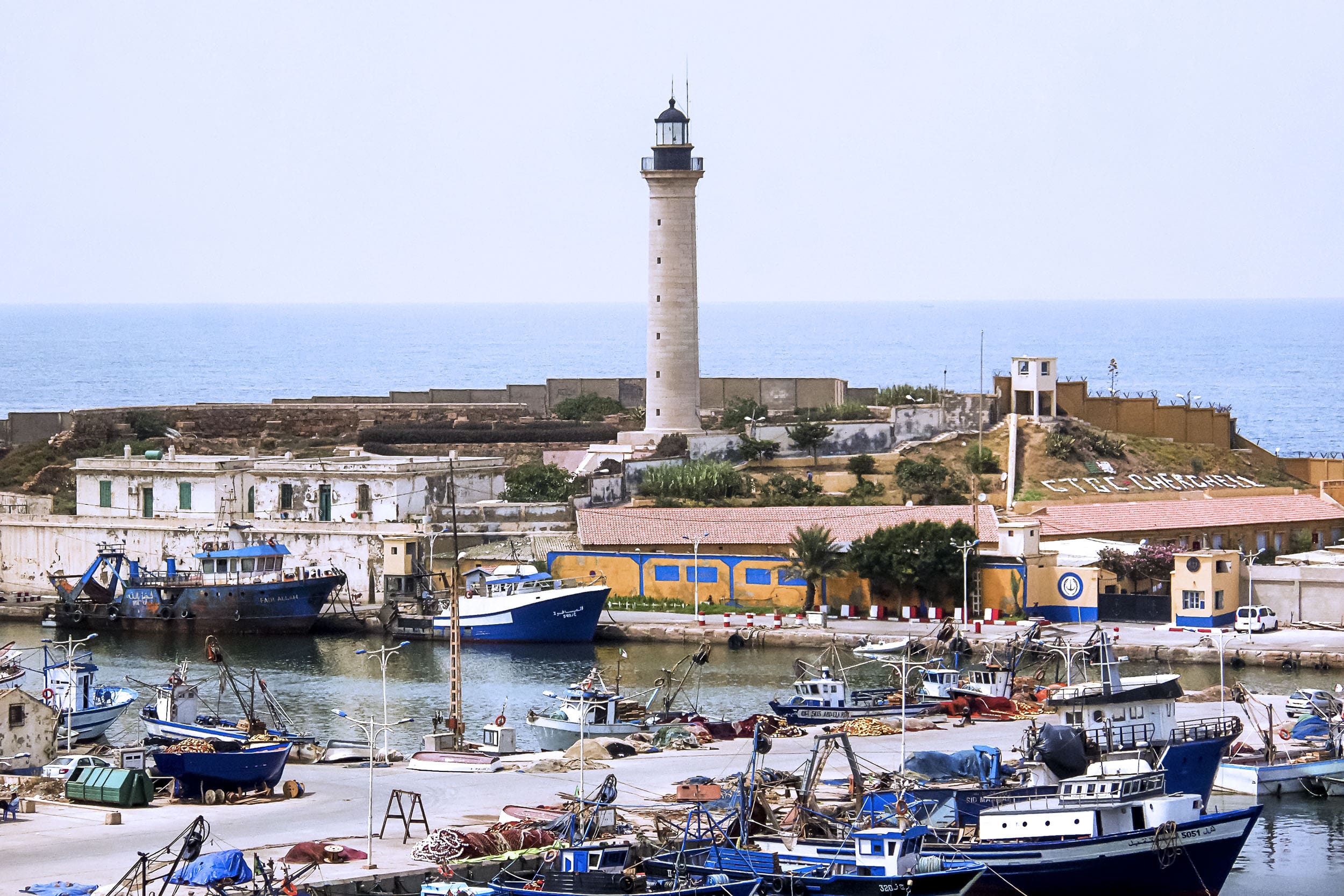
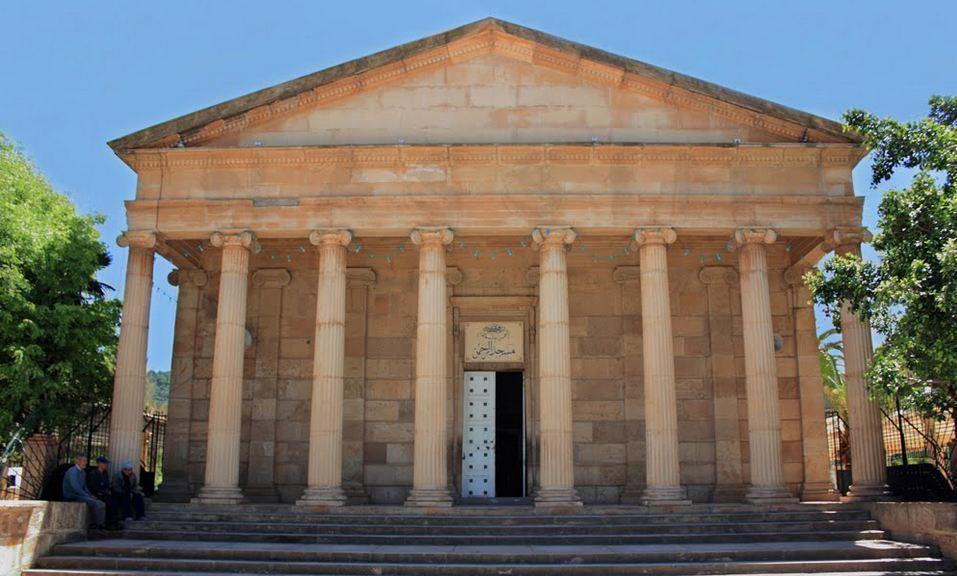

This section will be updated shortly.
By Cab
A ride to Cherchell from Constantine is a 5 hour long trip and costs around 900 to 1100 dinars. ($5 to $6)
By Plane

Days 7+
Head to the Airport
After soaking up on the beautiful Algerian culture, have your breakfast and check out. You will likely be packing up your last bits and pieces (not forgetting your passport) and heading on your way to the Airport.
The Most Popular Food in Algeria
Algerian cuisine is a cultural melting pot. Algeria was a French colony for 132 years, so it’s no wonder that the food has a strong French influence. However, there is also food from Berber, Italian, Spanish, Turkish, and Arab cuisines.
Camel meat is the most common meat to be found in the southern portion of Algeria. The native Algerian cuisines are excellent and unexpectedly decent.
Algerian food is filled with a richness and freshness few cuisines can match with, produced from a unique and interesting combination of French, Mediterranean, and North African ingredients.
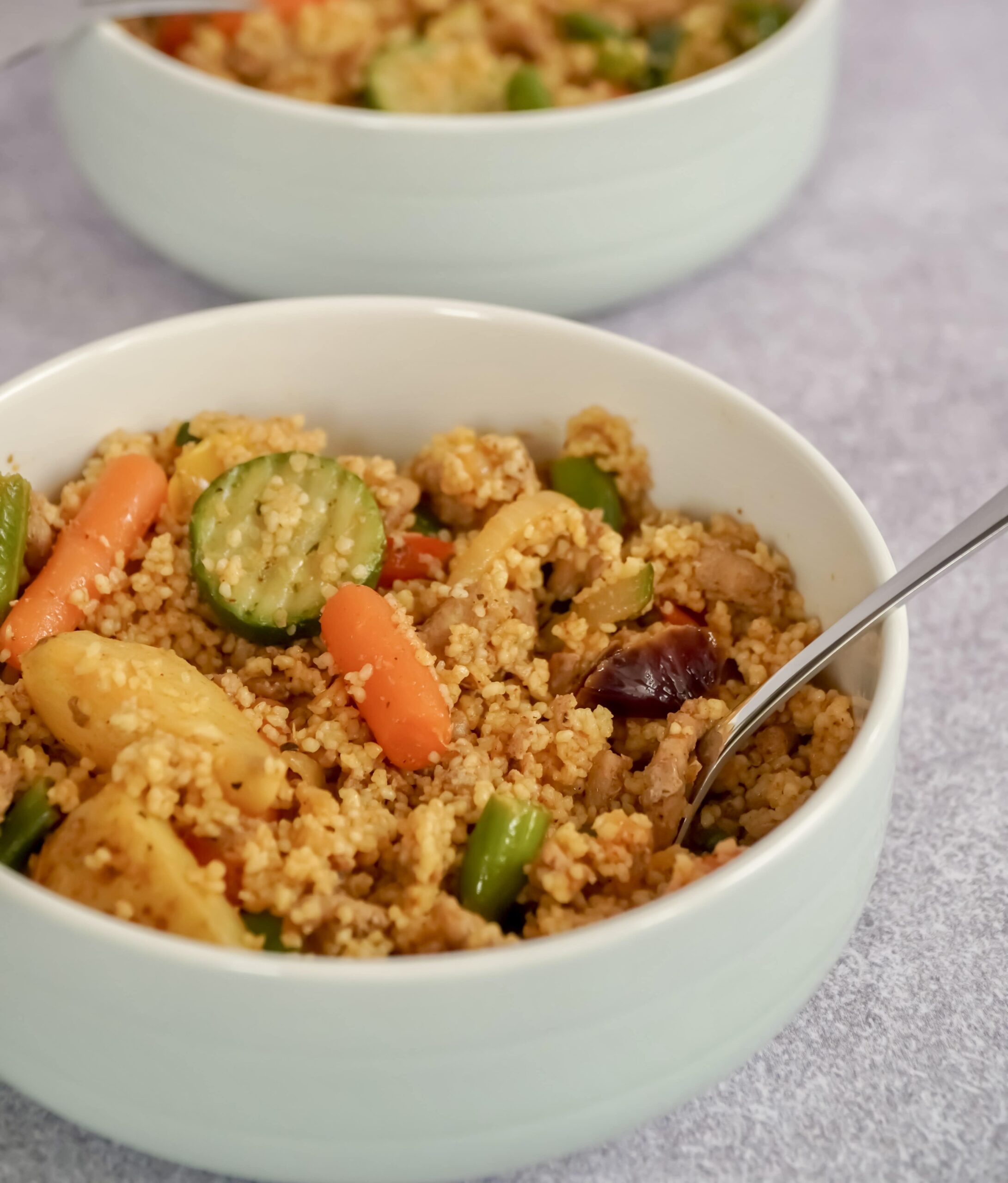
Couscous
Couscous is the most well-known Algerian cuisine. It’s often consumed on Fridays, according to a centuries-old practice of feeding couscous to the country’s impoverished on Fridays.
Couscous is created from steaming semolina that has been cooked for around 10 minutes. It is served with stew and a variety of vegetables such as carrots, potatoes, and zucchini. Depending on the area, different additives are added. In the Kabyle area, for example, black-eyed peas are added to provide texture and flavor.

Chorba Frik
Chorba Frik (also known as El Jari outside of the city) is well-known in Algeria’s northern regions. Every day of Ramadan, it is served as a main meal. It’s a light soup cooked with tomatoes and Frik (a type of wheat that’s green and high in fibers), coriander, onions, celery, beef, and chickpeas.
Every day during Ramadan, Algerians prepare a fresh batch of Chorba Frik to break their fast with. It is thought that this soup aids digestion and prepares an empty stomach for the several wonderful traditional foods that will follow.

Chtitha Batata
Few Algerian dishes come close to Chtitha Batata in terms of simplicity and ease of preparation. This affordable meal, also called as Marka Batata and Jwaz Batata, may appear basic, but it’s quite tasty.
It has a potato foundation cooked in a crimson sauce of onions, tomato puree, paprika, and chickpeas. The sauce might also include meat. The stock, seasoned with salt, pepper, and cumin, is heated until thick and then poured over the potatoes. This is one of the country’s favorite dinners throughout the winter months. It’s rich, flavorful, and oh-so-delicious.

Harira
In Algeria, there are several soups and broths, but the Harira is unquestionably one of the most well-known. Harira is a regular occurrence in West Algeria. Its recipe may differ from area to region, but it is usually rich and flavorful.
Harira is often cooked with pureed tomatoes, meat, and a variety of vegetables such as zucchini, carrots, potatoes, and onion. Generous amounts of herbs, such as ginger and coriander, assist to improve the flavor of this delectable soup. Harira is typically served with a couple slices of bread or Kessra. It is a popular Algerian dish with several variants.

Chekhchoukha
Chekhchoukha, as difficult as the word may appear, is one of Algeria’s most delicious meals. Chekhchoukha, which is popular in eastern cities like as Constantine and Biskra, is made differently depending on the place you visit. Some cities in the nation, for example, cook Chekhchoukha in a clay casserole, but others prepare it in an iron casserole. The flavor and thickness of Chekhchoukha are what distinguishes the two.

Mhajab
Mhajab is a bakery that Algerians consume on a daily basis, kind of like Naan or Paretha. It’s a thin bread composed of flour and water that’s packed with onions and tomatoes. Mhajab is then formed in layers of square dough, folded numerous times, and cooked in oil, making it a tasty choice for breakfast or sometimes on the side in lunch and dinner.
What's the Travel Budget in Algeria?
Flights
- Flights start at roughly $300 from nearby countries. Tickets however on average cost around $800 and can cost more depending on which class and from which country you depart from.
Accommodation
- Nomad Backpacking style travelers can expect to spend around $100 for a week
- Budget travelers can expect to spend around $250 for a week
- Mid-range travelers can expect to spend around $430 for a week
- Luxury travelers can expect to spend around $850 for a week
Food Budget (Three meals and drinks)
- Nomad Backpacking style travelers can expect to spend around $8 per person per day
- Budget travelers can expect to pay around $14 per person per day
- Mid-range travelers on average would cost $20 to $25 per person per day
- Luxury travelers can expect to pay around $30 to $40 per person per day
Overall Budget Styles (Not including Flights, Tours, Transportation, or Car Rental)
- Nomad Backpacking style travelers can expect to spend around $170 for a week
- Budget travelers can expect to spend around $360 for one person for a week
- Mid-range travelers can expect to spend around $620 for one person for a week
- Luxury travelers can expect to spend around $1200 for one person for a week
Flights
- Flights start at roughly $300 from nearby countries. Tickets however on average cost around $800 and can cost more depending on which class and from which country you depart from.
Accommodation
- Nomad Backpacking style travelers can expect to spend around $100 for a week
- Budget travelers can expect to spend around $250 for a week
- Mid-range travelers can expect to spend around $430 for a week
- Luxury travelers can expect to spend around $850 for a week
Food Budget (Three meals and drinks)
- Nomad Backpacking style travelers can expect to spend around $8 per person per day
- Budget travelers can expect to pay around $14 per person per day
- Mid-range travelers on average would cost $20 to $25 per person per day
- Luxury travelers can expect to pay around $30 to $40 per person per day
Overall Budget Styles (Not including Flights, Tours, Transportation, or Car Rental)
- Nomad Backpacking style travelers can expect to spend around $170 for a week
- Budget travelers can expect to spend around $360 for one person for a week
- Mid-range travelers can expect to spend around $620 for one person for a week
- Luxury travelers can expect to spend around $1200 for one person for a week
Flights
- Flights start at roughly $300 from nearby countries. Tickets however on average cost around $800 and can cost more depending on which class and from which country you depart from.
Accommodation
- Nomad Backpacking style travelers can expect to spend around $100 for a week
- Budget travelers can expect to spend around $250 for a week
- Mid-range travelers can expect to spend around $430 for a week
- Luxury travelers can expect to spend around $850 for a week
Food Budget (Three meals and drinks)
- Nomad Backpacking style travelers can expect to spend around $8 per person per day
- Budget travelers can expect to pay around $14 per person per day
- Mid-range travelers on average would cost $20 to $25 per person per day
- Luxury travelers can expect to pay around $30 to $40 per person per day
Overall Budget Styles (Not including Flights, Tours, Transportation, or Car Rental)
- Nomad Backpacking style travelers can expect to spend around $170 for a week
- Budget travelers can expect to spend around $360 for one person for a week
- Mid-range travelers can expect to spend around $620 for one person for a week
- Luxury travelers can expect to spend around $1200 for one person for a week
Flights
- Flights start at roughly $300 from nearby countries. Tickets however on average cost around $800 and can cost more depending on which class and from which country you depart from.
Accommodation
- Nomad Backpacking style travelers can expect to spend around $100 for a week
- Budget travelers can expect to spend around $250 for a week
- Mid-range travelers can expect to spend around $430 for a week
- Luxury travelers can expect to spend around $850 for a week
Food Budget (Three meals and drinks)
- Nomad Backpacking style travelers can expect to spend around $8 per person per day
- Budget travelers can expect to pay around $14 per person per day
- Mid-range travelers on average would cost $20 to $25 per person per day
- Luxury travelers can expect to pay around $30 to $40 per person per day
Overall Budget Styles (Not including Flights, Tours, Transportation, or Car Rental)
- Nomad Backpacking style travelers can expect to spend around $170 for a week
- Budget travelers can expect to spend around $360 for one person for a week
- Mid-range travelers can expect to spend around $620 for one person for a week
- Luxury travelers can expect to spend around $1200 for one person for a week
If you want to know what to pack, read this list below:
- This is a conservative country that can get extremely hot, dress accordingly
- Raincoat or Light Waterproof Jacket
- Hiking Boots or Sturdy Sneakers (Shoes You Don’t Mind Getting Wet)
- Sunscreen
- Insect Protection – Repellent and Clothing
- Sunglasses and Sun Hat
- Water Shoes
- Beach Towels/Sarong
- Dry Bag
- Money Belt or Cross Bag
- Portable Medical Kit
- Flashlight or Headlamp
- Copies of your passport.
- Get all the needed vaccinations before traveling
- A power bank is a must in any travel.
- Always have some cash with you just in case there are no ATMs and if you are dealing with a business that solely accepts cash
- Get yourself an adapter for your gadgets
- 1 toothbrush
- 1 tube of toothpaste
- 1 razor
- 1 package of dental floss
- 1 small bottle of shampoo
- 1 small bottle of shower gel
- 1 towel
- Deodorant
- Band-Aids
- Hydrocortisone cream
- Antibacterial cream
- Earplugs
- Tylenol
- Hand sanitizer (germs = sick = bad holiday)
- A key or combination lock
- Zip-lock bags
- Plastic bags (great for laundry)
- Universal charger/adaptor
- LifeStraw (A water bottle with a purifier)
- 1 dry shampoo spray & talc powder
- 1 hairbrush
- Makeup you use
- Hairbands & hair clips
- Feminine hygiene products
Clothing For Boys
- 1 pair of jeans or khaki pants
- 1 pair of shorts
- 1 bathing suit
- 5 T-shirts
- 1 long-sleeved T-shirt
- 1 pair of flip-flops
- 1 pair of sneakers
- 6 pairs of socks
- 5 pairs of boxer shorts
Clothing For Girls
- 1 swimsuit
- 1 sarong
- 1 pair of stretchy jeans
- 1 pair of leggings
- 2-3 long-sleeve tops
- 2-3 T-shirts
- 3-4 spaghetti tops
- 1 light cardigan
Want to plan your own trip, here are some of the best resources that can help you
- Skyscanner – They search small websites and budget airlines that larger search sites tend to miss. They are hands down the number one place to start.
- Momondo – This is another favorite flight search engine because they search such a wide variety of sites and airlines. Always check here too.
- Booking.com – The best all-around booking site that constantly provides the most affordable and lowest rates. They have the widest selection of budget accommodation.
- Couchsurfing – This website allows you to stay on people’s couches or spare rooms for free. It’s a great way to save money while meeting locals who can tell you the ins and outs of their city. The site also lists events you can attend to meet people (even if you’re not staying with someone).
- Intrepid Travel – If you want to do group tours, go with Intrepid. They offer good small group tours that use local operators and leave a small environmental footprint.
- Grassroots Volunteering – For volunteering, Grassroots Volunteering compiles a list of good local volunteer organizations that keep the money within the community.
- Get Your Guide – Get Your Guide is a huge online marketplace for tours and excursions. They have tons of tour options available in cities all around the world, including everything from cooking classes, walking tours, street art lessons, and more! It has the world’s largest collection of things to do with more than 30,000 activities in 7500 destinations.
- SafetyWing – Safety Wing offers convenient and affordable plans tailored to digital nomads and long-term travelers. They have cheap monthly plans, great customer service, and an easy-to-use claims process that makes it perfect for those on the road.
- Trip Advisor: Check the reviews and then book your accommodation. TripAdvisor is where you go when you want to compare prices with multiple accommodation providers.
- VRBO: is the main search engine to use when you are looking for a home or apartment rental. It can sometimes be cheaper than hotels and it is the best way to stay in areas that offer a more local feel.
- Hostelworld: With one of the largest databases of hostels in the world, Hostelworld is the go-to site when you are looking for budget accommodation.
- Rome 2 Rio: If you want to see how to get somewhere by plane, train, bus, ferry, or car Rome2Rio lays it all out for you as well as related costs.
- World Nomads Insurance: When traveling you should always have travel insurance. We have found the best bang for your buck is by far World Nomads.
Final Thoughts on Algeria
Algeria is definitely one beautiful country that is worth traveling to. Would you?
If you’ve been to Algeria let us know how your trip was in the comments below.